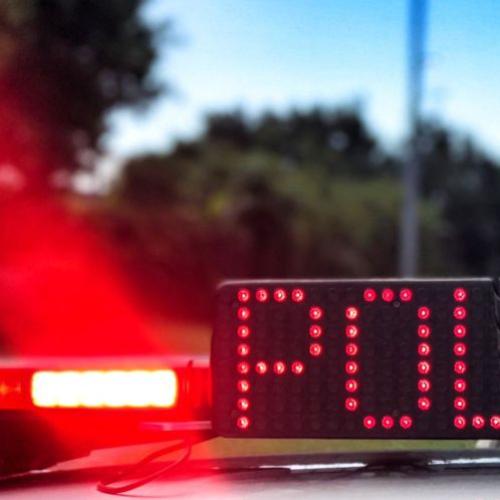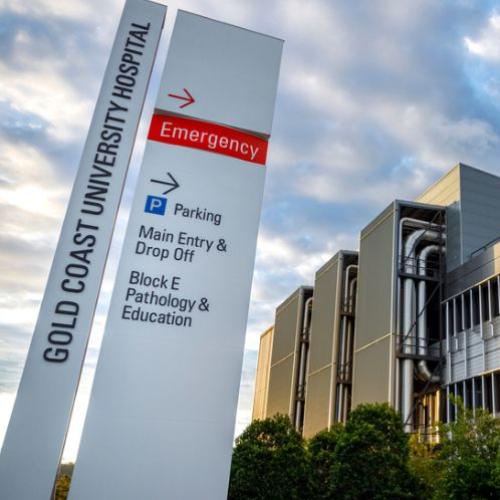After touching down at Sydney’s new second airport, visitors to the city will face an arduous journey on a buckling public transport network.
The $11 billion airport now under construction is one of the NSW government’s signature projects, with both major political parties excited by the prospect it could offer the city’s oft-ignored west.
But neither Labor nor the Liberals can agree on how to get commuters there and back.
Labor has committed to extending the under-construction Western Sydney Airport line to the north and south, but it won’t match plans to build two other lines connecting the area to Parramatta and Bankstown, citing a budget black hole for the multi-billion dollar project.
Labor leader Chris Minns accused the government of planning to sell off government assets such as Sydney Water to pay for the metro, despite Premier Dominic Perrottet ruling it out.
“Unfunded infrastructure means more privatisation for NSW,” Mr Minns said.
His party will instead spend an extra $305 million to ensure rapid bus routes already promised by the coalition are in place before the airport’s opening in 2026.
Transport expert Geoffrey Clifton says the bus links, while important in the short term, will not be enough down the track.
“We need to make sure that people can get to and from the airport, otherwise it’s going to be a white elephant,” Dr Clifton told AAP.
One in 10 Australians live in western Sydney and its population is growing at double the rate of the rest of NSW.
Connecting travellers to the hubs of Bankstown, Liverpool and Parramatta will be essential to the airport’s success.
“If the Labor Party isn’t proposing to build (the metro lines) straight away, they certainly need to be protecting the corridors,” Dr Clifton said.
“Putting buses on the road is the bare minimum.”
Mr Perrottet was scathing of Labor’s decision to drop the projects, saying it would “leave tradies high and dry with up to 4000 apprentice jobs to vanish.”
Without a direct link to Parramatta, travellers will need to get off the metro at St Mary’s and catch an existing heavy rail service to Sydney’s second CBD, with luggage in tow.
While the rail network has historically been reliable, structural issues – like ageing infrastructure and a tangled network – leave Sydney more vulnerable than newer networks like Brisbane and Perth.
Dr Clifton says a series of disruptions in the weeks leading up to the election uncovered an ongoing backlog of maintenance issues.
Much of Sydney’s rail network was built more than 100 years ago and the unique geography of the city, which results in several lines converging near the city centre, causes one incident to ripple across the entire system.
“Investing in maintenance is not glamorous, but it’s essential for the future of our transport network,” Dr Clifton told AAP.
The metro project was in part envisaged to increase the reliability of the entire system, removing rail traffic from a terminally congested network, but not everyone is happy with it.
The transport union has railed against the metro’s driverless trains, which Dr Clifton posits contributes to Labor’s lukewarm disposition to the format.
Sydneysiders are no strangers to industrial action.
A protracted union dispute over pay and the design of the state’s new inter-city trains brought the city to a standstill in 2022, forcing passengers onto an already stretched bus system.
Both sides have promised plans to tackle bus shortages that have led to service cancellations and delays across the state.
Labor and teal candidates have jumped on the issue, attacking the coalition for privatising the operation of the routes.
Independent candidate for Pittwater Jacqui Scruby says the privatisation of bus services on Sydney’s northern beaches has been “a disaster”.
“We’ve got primary school sport that’s been going for decades and they’re thinking of cancelling next term because the buses aren’t showing up,” she told AAP.
But Dr Clifton says privatisation doesn’t necessarily result in an inferior service.
While the sell-off of UK’s rail network showed how privatisation can go wrong, Japan’s super-efficient, privately-operated rail system is an example of how it can work well.
Other potential fixes have gone unaddressed by both sides.
Recent analysis by Dr Clifton and the Australian Timetable Association found Sydney’s light rail network is slower than foreign cities, with the city’s long awaited stretch from Circular Quay to Randwick averaging a dismal 11km/h.
Timing traffic lights to always show green for trams would be a relatively inexpensive way to speed up travel times.
Light rail vehicles, which can carry over 200 passengers, must often wait at intersections for a handful of cars to pass.
This would require a cultural shift for transport authorities, hamstrung by Australia’s car-centric mindset when compared to European and Asian counterparts.
“Further improvement would have to be at the expense of other users of the road network and that’s politically tough,” Dr Clifton says.
© AAP 2023











